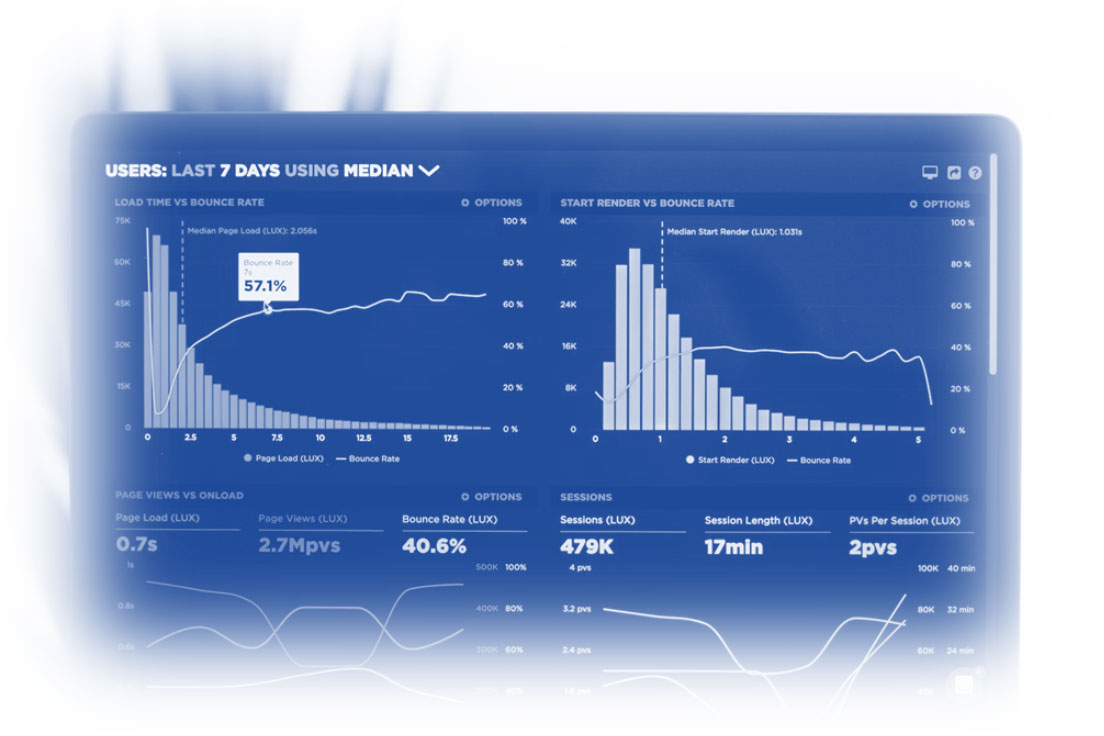How to do Facebook Ads Audit: Follow Our Expert Guide

How to Conduct a Comprehensive Facebook Ads Audit
Are you ready to unlock the full potential of your Facebook advertising? Conducting a comprehensive Facebook Ads audit can be an overwhelming task, but fear not! Our team of dedicated PPC Geeks is here to take on this colossal undertaking for you with our free social ads audit. By entrusting us with your Facebook Ads audit, you’ll save countless hours of painstaking work and gain invaluable insights into your campaign performance.
We’ll delve deep into your ad accounts, meticulously analysing every aspect, and distilling the data into actionable recommendations. With our expertise, you’ll have a clear roadmap, knowing precisely which levers to pull and buttons to press to optimise your Facebook PPC spend by ordering your free social media pay per click audit. If you’ve been asking yourself the question: Why is PPC so expensive? – say goodbye to guesswork and hello to improved results as we unlock the secrets to unleashing the full power of your Facebook advertising endeavours.
If you want to know How to do Facebook Ads Audit this article is for you! By now you will know Facebook advertising provides incredibly powerful opportunities for brands to connect with relevant audiences. But maximising the impact of your Facebook ad spend requires regularly auditing performance to identify optimisation opportunities.
Make data-driven decisions
Conducting a comprehensive Facebook Ads audit is crucial to ensure that your ad campaigns are performing optimally and delivering the desired results. By following these steps, you can identify areas of improvement and make data-driven decisions to enhance the effectiveness of your Facebook Ad Strategy and its outcomes:
- Establish a recurring audit framework: Set a schedule for conducting regular Facebook Ads audits. Depending on the volume of your ad campaigns, a monthly or quarterly audit may be appropriate. Consistency is key to monitoring performance over time and identifying trends.
- Capture key performance data: Gather all relevant data for each ad campaign. This includes metrics such as click-through rate (CTR), conversion rate, cost per click (CPC), cost per conversion (CPA), reach, engagement metrics, and return on ad spend (ROAS). Utilise Facebook Ads Manager or other analytics tools to obtain this data.
- Evaluate audiences and targeting: Review the audience segments you’ve targeted in your campaigns. Assess the performance of each audience based on their engagement, conversion rates, and overall cost-effectiveness. Consider refining or expanding your audience Social Media Ad Targeting based on the data.
- Assess creatives and messaging: Examine the visuals, ad copy, and call-to-action (CTA) used in your campaigns. Identify which creatives are resonating with your audience and driving the most conversions. A/B testing different ad variations can provide valuable insights into what works best.
Turn insights into performance
- Analyse campaign structure and spend: Look at the structure of your campaigns, ad sets, and individual ads. Check whether your budget allocation aligns with the performance of each ad set and if you’re reaching the desired audiences effectively. Make adjustments to redistribute budget where necessary.
- Monitor engagement and conversions: Evaluate the engagement metrics of your ads, such as likes, comments, and shares. Additionally, track the number of conversions and their sources. Understanding which ad types and content formats drive engagement and conversions will help optimise your strategy.
- Compare metrics to benchmarks: Establish benchmarks for your key performance indicators (KPIs) based on historical data or industry standards. Compare your current performance to these benchmarks to identify areas where you’re exceeding expectations or falling short.
- Identify improvements: Based on the insights gained from the audit, pinpoint areas that require improvement. This could involve tweaking audience targeting, refining ad creatives, adjusting bidding strategies, or optimising your campaign structure.
- Turning insights into optimised ad performance: Take the findings from your audit and implement changes in your ad campaigns. Optimise underperforming ads, pause ineffective ones, and scale successful campaigns. Continuously monitor the impact of these adjustments.
By conducting regular Facebook Ads audits and making data-driven optimisations, you can improve the efficiency of your ad spend, reach the right audience, and drive better results for your brand. Remember that the digital advertising landscape is constantly evolving, so staying up-to-date with new features and best practices is essential to maintain a successful advertising strategy.
Set Up a Recurring Audit Framework
Setting up a recurring Social Media Audit framework for your Facebook advertising is essential for maintaining continuous improvements and ensuring that your ad campaigns stay on track.
Here’s a more detailed explanation of the key steps mentioned:
- Set a regular audit cadence such as monthly or quarterly: If you are struggling to determine how frequently you’ll conduct an audit of your social media advertising on Facebook Ads. The cadence can depend on factors like the volume of your ad campaigns, the size of your team, and the pace of changes in your industry. Monthly or quarterly audits are common choices to strike a balance between staying vigilant and allowing sufficient time to gather meaningful data.
- Assign clear responsibilities for coordinating audits: Designate specific team members responsible for coordinating and conducting the Facebook Ads audits. This ensures accountability and guarantees that the audits are carried out promptly and efficiently.
- Follow a standardised methodology for each audit: Create a step-by-step procedure for conducting the PPC audit. Having a standardised methodology ensures consistency across audits and makes it easier to track changes over time. The methodology should cover data collection, analysis, and optimisation recommendations.
- Develop templates for capturing data to allow direct comparisons: Use predefined templates to capture key performance data from your Facebook Ads Manager or analytics tools. These templates should be designed to gather relevant metrics, such as CTR, CPC, conversion rates, and ROAS, making it easier to compare performance between different campaigns and time periods.
Important metrics
- Focus on the key metrics tied to overarching campaign goals and KPIs: Identify the most important metrics that align with your campaign goals and overall marketing KPIs. This focus allows you to assess the performance of your ads based on the metrics that truly impact your business objectives.
- Take an omnichannel view across Facebook, Instagram, Messenger, and Audience Network: If you’re running ads across multiple platforms within the Facebook ecosystem (e.g., Facebook, Instagram, Messenger, Audience Network), consider the performance of your campaigns holistically. Analyse how each platform contributes to the overall success of your advertising efforts.
- Share findings across teams, stakeholders, and agency partners: Transparency and collaboration are crucial in the audit process. Share the audit findings with all relevant parties, including marketing teams, stakeholders, and any PPC agency partners involved in managing your Facebook Ads. This fosters a shared understanding of the campaign’s performance and encourages collective efforts to optimise results.
By implementing these steps, you can transform Facebook Ads audits from a sporadic, reactive activity into a proactive and strategic initiative. Consistent audits empower you to identify patterns, trends, and opportunities, leading to more effective ad campaigns and better returns on your advertising investments.
Are Facebook Ads Performance Data Audits Expensive?
Expect to pay at least £1,000 for a standard Facebook Ads audit, but costs can exceed £10,000 for an extensive project involving multiple analysts, workshops, and deliverables.
While the cost of a social media audit is a consideration, it’s essential to evaluate the potential benefits. An effective audit can lead to enhanced audience engagement, improved content strategy, and a stronger online presence, ultimately translating into increased brand recognition and revenue.
See How Much is a Social Media Audit for typical pricing. We will help lift the lid on what to expect, prices and the likely outcomes for your brand.
Capture Critical Facebook Ads Performance Data
Capturing critical Facebook Ads performance data is the foundation of conducting a thorough audit. By collecting comprehensive social media advertising insights across various dimensions, you gain valuable insights into the effectiveness of your campaigns. Here’s an expanded explanation of the performance data you should capture:
-
Campaigns:
- Impressions: The number of times your ads were shown to users.
- Reach: The number of unique users who saw your ads.
- Frequency: The average number of times each user saw your ads.
- Clicks: The number of times users clicked on your ads.
- CTR (Click-Through Rate): The percentage of ad impressions that resulted in clicks (calculated as clicks divided by impressions).
- Conversions: The number of times users completed a desired action, such as making a purchase or filling out a form.
- Cost per Conversion: The average cost incurred for each conversion.
- ROAS (Return on Ad Spend): The revenue generated for every dollar spent on advertising.
-
Ad Sets:
- Delivery: The status of ad set delivery, whether active, paused, or completed.
- Budget Burn: How much of the allocated budget has been spent.
- Frequency: The average number of times users saw ads within the ad set.
- Impressions: The total number of times ads within the ad set were displayed.
- Reach: The unique number of users reached by ads in the ad set.
-
Audiences:
- Impressions: The number of times ads were shown to each audience segment.
- Clicks: The number of clicks received from each audience.
- CTR: The click-through rate for each audience segment.
- Conversions: The number of conversions achieved from each audience.
- Frequency: The average number of times each audience member saw your ads.
-
Placements:
- Impressions: The number of times ads were shown on each platform (Facebook, Instagram, etc.).
- CTR: The click-through rate for ads on each platform.
- Conversions: The number of conversions attributed to each platform.
-
Creatives:
- Impressions: The number of times each creative was displayed.
- Clicks: The number of clicks received by each creative.
- CTR: The click-through rate for each creative.
- Conversions: The number of conversions attributed to each creative.
- Video Views: The number of times videos were viewed.
-
Landing Pages:
- Views: The number of times the landing page was accessed.
- Drop-offs: The number of users who left the landing page without taking any action.
- Conversions: The number of conversions completed on the landing page.
Additionally, when you are deciding on what is included in a social ads audit you need to look at many segments of the data by various dimensions such as time (daily, weekly, monthly), geography (location of the audience), device (mobile, desktop), campaign objective (awareness, consideration, conversion), and any other relevant factors to gain deeper insights into performance trends and patterns.
By capturing and analysing this extensive performance data, you can identify which aspects of your Facebook Ads campaigns are performing well and which ones need improvement. These insights will guide your optimisation efforts and help you create more effective and targeted ad campaigns in the future.
Evaluate Audience Targeting and Optimisation Opportunities
Evaluating audience targeting is a crucial aspect of your Facebook Ads audit. This step helps you identify opportunities to improve the relevance and efficiency of your ad campaigns.
Here’s a more detailed explanation of what to assess:
- Custom Audiences Performance:
- Clicks: Analyse the number of clicks generated by each custom audience segment. This will show you which audience groups are most engaged with your ads.
- Conversions: Evaluate the number of conversions achieved from each custom audience. This helps you understand which segments are driving valuable actions, such as purchases or sign-ups.
- Frequency: Check the average number of times each user in the custom audience saw your ads. High frequency may indicate ad fatigue, while low frequency might suggest a need for increased reach.
- Lookalike Audience Performance at 1-10% Levels:
- Assess the performance of lookalike audiences created based on your custom audiences. Lookalike audiences are composed of users similar to those in your source audience.
- Analyse lookalike audiences at different percentage levels (1-10%) to see how closely they match your source audience and how well they perform in terms of clicks, conversions, and other key metrics.
- Interest, Behavioural, Demographic Targeting Performance:
- Review the Social Media Advertising Performance of different interest, behavioural, and demographic targeting options. Identify which specific interests, behaviours, or demographics are driving the best results.
- Focus on refining targeting options that deliver high CTRs, conversions, and engagement.
High-performing Audience Segments
- Overlaps Between Top Performing Audiences for Additional Exclusion Opportunities:
- Identify any overlapping audience segments among your top-performing audiences. Overlaps might lead to audience duplication and unnecessary competition within your own campaigns.
- Exclude duplicated audiences or modify your campaign structures to ensure efficient targeting.
- Low-Converting Segments to Potentially Remove or Bid Down:
- Pinpoint audience segments that are not generating conversions or have a high cost per conversion. Consider removing or reducing bids for these segments to allocate budget more effectively.
- Opportunities for Expanded Target Audiences Based on High Performers:
- Look for patterns in high-performing audience segments. Are there common interests, behaviours, or demographics that perform exceptionally well?
- Use these insights to identify new potential audiences to target and expand your reach.
By thoroughly evaluating your audience targeting, you can refine your Facebook Ads strategy to focus on the most valuable audiences. Make sure to check out our what are examples of social media audits to help you immerse yourself in the large array of possibilities.
Regularly optimising your targeting based on performance data will lead to better ROI, increased engagement, and more successful ad campaigns overall. As audience behaviour and interests change over time, ongoing audience analysis is essential to stay relevant and effective in your advertising efforts.
Assess Ad Creative and Messaging Performance
Assessing ad creative and messaging performance is a very important aspect of how to do social media marketing audits and it is vital to ensure that your Facebook Ads resonate with your target audience and drive meaningful engagement. Here’s a more detailed explanation of how to analyse different aspects of your ad creative and messaging:
- Creative Variations, Formats, and Messages:
- Compare Performance of Different Formats: Analyse the performance of various ad formats, such as single image ads, carousel ads, slideshow ads, and video ads. Assess metrics like view rates, engagement, and conversions for each format to understand which ones are most effective for your objectives.
- Review Top and Lowest Performing Creatives: Identify your best-performing ad creatives based on metrics like CTR, conversions, and engagement. Likewise, review the lowest performing creatives to understand what isn’t resonating with your audience.
- Assess Messaging Relevance and Motivation: Evaluate the ad copy and messaging used in your creatives. Determine if the message aligns with your campaign goals and if it motivates users to take action.
- Format and Aspect Ratios for Fit Across Placements:
- Ensure Adaptability Across Placements: Your ad creatives may appear on various placements, such as Facebook, Instagram, and Audience Network. Check if the creatives are optimised for each placement and if they maintain visual appeal and relevance across different platforms.
- Aspect Ratios: Ensure that your images and videos have appropriate aspect ratios to avoid cropping or scaling issues on different devices.
Leverage User Feedback
- Identify Creative Fatigue Among Audiences:
- Monitor Ad Frequency: Keep track of how frequently your audience sees the same ad. High ad frequency can lead to creative fatigue, causing a decline in performance.
- Develop New Ads: When creative fatigue occurs, it’s essential to develop new ad variations to keep your campaigns fresh and engaging.
- Review Ratings on Copy Relevance and Creative Quality:
- Leverage User Feedback: If available, review any user feedback or ratings on the relevance and quality of your ad copy and creative elements.
- Address Concerns: Address any negative feedback or low ratings by refining your messaging and improving the overall creative quality.
Using Insights to Optimise Creatives and Messaging:
- Based on your analysis, focus on the top-performing ad formats and creatives that resonate best with your audience.
- Revise and Optimise Messaging: Use the insights gained to refine your ad copy and messaging to make it more relevant and motivating.
- Test New Variations: Continuously experiment with new creative variations to find fresh ways to engage your audience.
- Rotate Creatives: Avoid showing the same ad to your audience too frequently by rotating your creatives to reduce creative fatigue.
- A/B Testing: Conduct A/B testing with different ad copy and visuals to find the most effective combinations.
By regularly assessing ad creative and messaging performance, you can continuously optimise your Facebook Ads to capture your audience’s attention, drive higher engagement, and achieve better results for your advertising campaigns. Keep a pulse on your audience’s preferences and feedback to ensure your ad creatives remain effective and relevant over time.
Analyse Campaign Structure and Budgeting
Analysing campaign structure and budget allocation is crucial for maximising the effectiveness of your Facebook Ads.
Here’s a more detailed explanation of what to consider during this analysis (and here are some of our tip picks for Social Media Advertising Mistakes that you will want to avoid):
- Evaluate Campaign Component Structure Against Objectives:
- Review your overall campaign architecture and ensure it aligns with your specific marketing objectives. Each campaign should have a clear goal, such as increasing website traffic, generating leads, or driving sales.
- Assess if the ad sets within each campaign are targeting relevant audiences and if the creatives and messaging support the campaign’s objective.
- Identify Top Performing Campaigns for Further Investment:
- Identify campaigns that consistently outperform others in terms of key metrics like CTR, conversion rate, and ROAS.
- Allocate more budget to these high-performing campaigns to capitalise on their success and achieve better overall results.
- Assess Bids, Budgets, and Pacing Across Audiences, Days, Times, and Placements:
- Analyse bid strategies to ensure you’re bidding appropriately for your campaign objectives and targeting settings.
- Review budget allocation across ad sets to ensure you’re investing more in the best-performing audiences and placements.
- Monitor pacing to make sure your budget is spent consistently throughout the campaign’s duration without exhausting it too quickly.
Reallocate Budget to Performing Areas
- Check Campaign Settings for Optimal Run Times, Frequencies, Floor Prices, and Delivery Pacing:
- Review the scheduling settings to ensure your ads are running at the most relevant times for your target audience.
- Monitor ad frequency to prevent ad fatigue and maintain engagement.
- For campaigns using auction bidding, set appropriate floor prices to avoid overspending on less valuable actions.
- Optimise delivery pacing to evenly distribute your ads and avoid potential delivery gaps or bursts.
- Confirm Campaign-Level Conversion Tracking and Attribution Modelling:
- Ensure that conversion tracking is set up correctly for each campaign, so you can accurately measure the impact of your ads.
- Use the appropriate attribution model to understand how different touch points contribute to conversions and adjust your optimisation strategy accordingly.
- Identify Underperforming Elements to Potentially Pause, Consolidate, or Revamp:
- Identify ad sets or campaigns that consistently underperform or fail to meet your desired KPIs.
- Consider pausing or consolidating underperforming elements to reallocate budget to better-performing areas.
- Revamp creative assets, messaging, or targeting for underperforming campaigns to test new strategies.
Properly constructing your campaigns and allocating budgets strategically will help improve the delivery and performance of your Facebook Ads. Regularly analyse and optimise your campaign structure and budget allocation based on data-driven insights to achieve better results and a higher return on your ad spend. A well-organised and optimised campaign structure is essential for a successful Facebook advertising strategy.
Monitor Engagement and Conversions Over Time
Monitoring engagement and conversions over time is a crucial aspect of your Facebook Ads strategy. It allows you to understand how your campaigns are performing over weeks and months, identify trends, and make data-driven decisions to optimise your advertising efforts. Here’s a more detailed explanation of what to consider when monitoring engagement and conversions:
- Assess Clicks, CTR, CPC, and Other Upper Funnel Metrics Over Weeks and Months:
- Compare the number of clicks and click-through rates (CTR) over different time periods to identify trends in user engagement with your ads.
- Analyse the cost per click (CPC) to see if there are any significant fluctuations or patterns.
- Track Conversion Rates for Key Events like Registrations, Sales, or Lead Captures:
- Monitor the conversion rates for your key objectives, such as registrations, purchases, or lead captures.
- Identify any changes in conversion rates and investigate the factors that might be influencing these fluctuations.
- Monitor Cost per Conversion and Return on Ad Spend Trends:
- Keep track of your cost per conversion (CPC) and return on ad spend (ROAS) to assess the efficiency and profitability of your campaigns.
- Look for trends in these metrics to understand how well your advertising efforts are performing over time.
Seasonal Trends and Variations
- Identify Changes Correlating with New Campaign Launches, Website Updates, and Other Factors:
- Note any significant changes in engagement or conversions that align with the launch of new campaigns or updates to your website or landing pages.
- Understand the impact of these changes on your overall ad performance.
- Review Frequency and Recency Engagement Dynamics over Periods:
- Analyse how frequently users are seeing your ads (frequency) and how recently they saw them (recency).
- High ad frequency or low recency may indicate ad fatigue, which could affect engagement and conversions.
- Check Seasonality Patterns to Inform Ongoing Planning:
- Take into account seasonal trends and variations in consumer behaviour.
- Adjust your ad strategies and budgets accordingly to align with seasonal demand.
Ongoing trend analysis is vital for optimising your campaigns effectively. It helps you adapt to changes in audience behaviour, market conditions, and competitive landscapes. By closely monitoring engagement and conversion metrics over time, you can make data-driven adjustments to your targeting, creatives, and overall ad strategy.
It’s essential to maintain a continuous feedback loop and regularly review the impact of optimisations you implement based on trend analysis. This iterative process allows you to refine your campaigns and maximise their performance for better ROI and business outcomes. By staying vigilant and responsive to performance trends, you can continually enhance the effectiveness of your Facebook Ads and stay ahead of the competition.
Compare Metrics to Key Benchmarks
Comparing your Facebook Ads metrics to key benchmarks is essential for understanding how well your campaigns are performing relative to industry standards and past performance.
Here’s a more detailed explanation of How Do You Do a Social Audit and how to conduct benchmarking for your Facebook Ads:
- Review Impressions, Clicks, and Conversions Versus Past Periods for Trend Analysis:
- Analyse the trend of impressions, clicks, and conversions over time. Compare current metrics with data from previous weeks, months, or quarters.
- Identify any significant increases or decreases in these metrics and investigate the reasons behind the trends.
- Compare Engagement, Click-Through-Rate, and Quality Ranking Metrics to Industry Averages:
- Use industry benchmarks to gauge how well your ads are engaging users. Compare metrics like click-through rate (CTR) and quality ranking to the average performance in your industry.
- This comparison helps you understand if your ad engagement is above or below the industry standard and where improvements can be made.
- Assess Performance of Different Audience Segments Against One Another:
- If you’ve segmented your audiences based on various criteria, compare the performance of these segments against one another.
- Identify which audience segments are driving the best results and adjust your targeting accordingly.
Understand Your Ad Performance
- Monitor Return on Ad Spend (ROAS) Benchmarks for Your Vertical and Business Model Specifics:
- ROAS benchmarks can vary across industries and business models. Research industry-specific ROAS benchmarks to understand how your campaigns compare.
- Evaluate if your campaigns are meeting or exceeding the expected return on ad spend based on your business goals.
- Identify Competitive Gaps in Reach, Engagement, and Conversions:
- Analyse your competitors’ Facebook Ads to identify any gaps in reach, engagement, or conversions.
- Understand how your ad performance compares to your competitors and look for opportunities to gain a competitive edge.
Benchmarking provides valuable context and insights into the effectiveness of your ad program. It helps you identify areas where you’re excelling and areas that need improvement. By comparing your metrics to relevant benchmarks, you can set realistic goals, understand your competitive position, and make informed decisions to optimise your Facebook Ads.
Keep in mind that benchmarks may vary based on factors such as your industry, target audience, and campaign objectives. Continuously monitor PPC management benchmark data and adjust your strategy accordingly to stay competitive and achieve optimal results from your Facebook advertising efforts.
Identify Optimisation Opportunities and Recommendations
Identifying optimisation opportunities and providing actionable recommendations is the final and crucial step of a comprehensive Facebook Paid Social Media Ads Audit. This phase involves synthesising the data and insights gathered throughout the audit and presenting actionable steps to improve the performance of your ad campaigns. Here’s a more detailed explanation of each aspect:
- Summarise Priority Issues and Gaps Uncovered Based on Data and Analysis:
- Present a concise summary of the key issues and gaps identified during the audit. Focus on areas where your ad campaigns are falling short or not meeting your desired KPIs.
- Highlight Current High Performers to Potentially Amplify:
- Recognise the ad campaigns, ad sets, or creatives that have been top performers during the audit period.
- Recommend allocating more budget or resources to amplify the success of these high-performing elements.
- Provide a Prioritised Set of Optimisation Recommendations with Projected Impact:
- Offer a clear list of optimisation recommendations, prioritised based on their potential impact on performance.
- Explain the expected outcomes of each recommendation to set realistic expectations.
- Outline Quick Wins that can be Implemented Immediately for Fast Returns:
- Suggest immediate changes that can be implemented easily and quickly to achieve fast improvements in performance.
- Quick wins can help build momentum and provide early positive results.
Comprehensive Reporting
- Specify Projected Improvements to KPIs if Recommendations are Followed:
- Quantify the potential improvements in key performance indicators (KPIs) if the recommended optimisations are executed.
- This allows stakeholders to understand the potential return on investment for implementing the proposed changes.
- Set Next Steps for Acting on Top Recommendations to Sustain Momentum:
- Provide a clear action plan for implementing the recommended optimisations.
- Assign responsibilities to team members and set deadlines for executing the changes.
- Sharing a Report with Concrete Optimisation Advice Helps Propel Ongoing Improvements:
- Compile all the findings, insights, and recommendations into a comprehensive report.
- Share this report with relevant teams, stakeholders, and agency partners to ensure everyone is aligned and aware of the optimisation plan.
The goal of providing actionable recommendations is to guide your team and stakeholders towards optimising your Facebook Ads for better results. Concrete advice helps everyone understand the areas that need attention and the steps required to achieve improvements. Regularly review the impact of your optimisation efforts and conduct future audits to ensure ongoing improvements and success in your Facebook advertising endeavours.
Turn Insights Into Improved Facebook Ads Performance
Turning insights into improved Facebook Ads performance is the key to maximising the value of your audits and achieving better results with your advertising efforts.
Here’s a more detailed explanation of how to effectively act on the insights gained from the Audit of Your Social Media Ads:
- Act Quickly on Obvious Quick Optimisation Wins Uncovered:
- Address low-hanging fruit and implement immediate changes identified during the audit that can lead to quick improvements in performance.
- These quick wins could include pausing underperforming ads, adjusting bids, reallocating budgets, or refining ad copy.
- Develop New Ad Creatives Informed by Insights into Top Performers:
- Use the knowledge gained from top-performing ad creatives to inform the development of new, engaging content.
- Test new variations and creative concepts to continuously improve ad performance.
- Refine Audience Targeting Based on Analysis of High and Low Converters:
- Optimise your audience targeting based on the insights gained during the audit.
- Focus on the high-converting audience segments and refine or exclude low-converting ones.
- Adjust Campaign Structures, Bids, Budgets, and Settings Based on Learnings:
- Make necessary adjustments to your campaign structures, bids, budgets, and delivery settings based on the data and analysis.
- Optimise your ad sets to focus on the most effective placements, times, and devices.
Identify Optimisation Opportunities
- Test Promising New Segments, Formats, and Copy Directions Identified:
- Implement A/B tests to experiment with new audience segments, ad formats, and messaging approaches that the audit identified as promising.
- Testing helps validate the effectiveness of these new strategies and informs future optimisations.
- Monitor Performance for 2-4 Weeks After Initial Changes to Track Impact:
- Allow sufficient time for your optimisations to take effect and monitor the performance of your ad campaigns for at least 2-4 weeks.
- Continuously track key metrics and compare them to pre-optimisation performance to assess the impact of your changes.
- Outline Next Round of Potential Optimisations to Tackle Based on Additional Data:
- Conduct follow-up audits to gather more data and insights over time.
- Use this additional data to identify further optimisation opportunities for future campaigns.
Consistently optimising your Facebook Ads based on audit insights will lead to enhanced ad impact over time. The iterative nature of this process allows you to continually refine and improve your advertising strategy. Regularly analyse data, conduct Social Media PPC Audits, and implement optimisation tactics to ensure your campaigns stay relevant, effective, and aligned with your business goals. By leveraging insights from your audits, you can build a more successful and results-driven Facebook advertising strategy.
The Value of Rigorous Facebook Ads Auditing
The value of conducting rigorous Facebook Ads audits cannot be overstated. Regular audits provide numerous benefits that help you refine your ad strategies and achieve better results. Here’s an expanded explanation of the advantages of conducting Facebook Ads audits:
- Identifying Changes in Audience Behaviour and Persona Composition:
- Audits allow you to monitor shifts in audience behaviour, interests, and demographics over time.
- Understanding these changes helps you adapt your targeting and messaging to remain relevant to your audience.
- Quantifying Campaign Impact on Business KPIs like Sales and Leads:
- By measuring the impact of your campaigns on key performance indicators (KPIs), such as sales and leads, you can gauge the effectiveness of your advertising efforts.
- This data helps you allocate resources to the most successful campaigns and optimise underperforming ones.
- Optimising Creative Formats and Messaging for Relevance:
- Audits provide insights into which ad formats and messaging resonate most with your audience.
- Armed with this information, you can create more compelling and relevant creatives to drive higher engagement and conversions.
- Spotting Channel Challenges and Opportunities Early:
- Identify any challenges or opportunities specific to different ad channels within the Facebook ecosystem, such as Facebook, Instagram, Messenger, or Audience Network.
- Optimise your campaigns based on the unique characteristics of each channel to maximise their impact.
Work Cohesively Towards Common Goals
- Diagnosing the Causes Behind Engagement Shifts:
- Understand the reasons behind changes in engagement metrics like CTR, click rates, and ad impressions.
- This information helps you troubleshoot issues, adjust your strategies, and maintain consistent performance.
- Generating Benchmarks to Measure Future Efforts Against:
- Regular audits provide benchmark data that allows you to set realistic goals and track your progress over time.
- Benchmarking helps you understand where you stand compared to industry standards and previous performance.
- Pinpointing Adjustments that Lift ROI of Ad Spend:
- Data from audits helps you make data-driven adjustments to optimise your ad spend and achieve a higher return on investment (ROI).
- By focusing on the most effective tactics, you can maximise the impact of your budget.
- Keeping Teams Informed on Latest Best Practices:
- Audits promote knowledge sharing and ensure that all stakeholders are aware of the latest best practices and optimisation strategies.
- This alignment helps teams work cohesively towards common goals.
Make audits a consistent part of your Facebook Ads regimen. The insights gained from regular audits provide invaluable information for continually refining your strategies and improving your advertising results. By staying vigilant and responsive to performance trends, you can maintain a competitive edge and drive better returns on your ad spend. A proactive and data-driven approach to audits empowers you to optimise your Facebook Ads effectively and stay ahead in the dynamic digital advertising landscape.
Get Actionable Recommendations
Hopefully by now you are ready to take your Facebook advertising to new heights? Conducting a comprehensive Facebook Ads audit like a PPC expert is no small task, but fear not, our experts here at PPC Geeks are here to handle it for you!
By partnering with us for your free audit, you’ll save valuable time and effort, gaining in-depth insights into your campaigns. Our team of dedicated PPC Geeks will meticulously analyse your ad accounts, identify optimisation opportunities, and provide actionable recommendations tailored to your specific goals.
Let us do the heavy lifting, so you can focus on running your business. Contact us today for your free Facebook Ads audit and unlock the potential for better results, increased ROI, and an advertising strategy that truly shines, or you can follow our how can I do a social media audit for free guide!
Author
Search Blog
Free PPC Audit
Subscribe to our Newsletter
The Voices of Our Success: Your Words, Our Pride
Don't just take our word for it. With over 100+ five-star reviews, we let our work-and our satisfied clients-speak for us.
"We have been working with PPC Geeks for around 6 months and have found Mark and the team to be very impressive. Having worked with a few companies in this and similar sectors, I rate PPC Geeks as the strongest I have come across. They have taken time to understand our business, our market and competitors and supported us to devise a strategy to generate business. I value the expertise Mark and his team provide and trust them to make the best recommendations for the long-term."
~ Just Go, Alasdair Anderson





